‘At special times of the year, like Christmas or Easter, the islanders would kill a lamb with good meat on it, one of the castrated ones. It was like a feast. And we would have enough to eat for quite a while.’ - Michael Carney, From The Great Blasket To America
Anyone following Green Italian Kitchen will know that we have a life that has us swinging like a pendulum between Italy (Rieti in Lazio) and Ireland (the Dingle Peninsula). This is a privilege, yes, but over the past couple of years, our motivations have been due to necessity, and I plan to write a little more about this (for anyone interested) when the time is right.
I am a first-generation Irish American with roots in Kerry, and I relocated from Manhattan to Dublin when I was 24 years old (a lifetime ago at this point). Riccardo is as Italian as they come, but he moved to Dublin in his early thirties to learn English and has maintained a close connection to Ireland ever since.
The upside of this story is that we are able to live and indulge in the land of our ancestors - locations that we love and which feed our souls. I am most passionate about Italian and Irish food history, heritage and traditions, more specifically in the rural space, and these movements have allowed me to identify and observe the commonalities in food and agricultural life between these two locations, which at first glance seem to be worlds apart. One of these similarities is our agropastoral heritage and lamb and mutton as an indigenous food.
Sixteen years ago, when I first accompanied my mother-in-law to the village butcher, she ordered a cow’s tongue, which he hastily wrapped in paper before slapping it on top of the display case. I jumped back with a fright, afraid that I might be licked, and after observing the wares on offer, she also ordered a taut sheep’s head (capoccia di agnello) with a line of skeletal teeth and beady eyes staring into space. I later watched in horror as she cooked it over the fire before turning it in her mouth like a freshly cooked piece of corn on the cob. Saying this, I know that my grandparents and their parents before them may have done something similar but I can’t imagine that my own mother, a serial lamb lover, ever gnawing on a sheeps head.
Through the years, I have been known to find half of a freshly killed lamb (mezzo agnello) from our local farmer left by my mother-in-law in the middle of my Italian kitchen table as if it were some kind of sacrificial peace offering — the famous capoccia peering at me through the plastic. I have also lamented to Riccardo about his mother getting a grip on her meat obession as our appetites and personal tastes have never able to keep up with her excessive purchases and table top offerings. An obsession, taken on by a generation that suffered hunger and poverty during the war times of their youth.
Apart from the odd lamb chop cooked over the fire a scottaditto (burned fingers) or a slow-cooked sauce of castrato (mutton) enjoyed over polenta or gnocchi, I do not prefer our local lamb and sheep here in Rieti which I have often found swimming in fat. Coming from an Irish sheep farming family, I am a self-confessed sheep snob, knowing that nothing compares to the lean and most tender taste of the lamb found on the Dingle Peninsula. The best lamb that Riccardo has ‘ever tasted in his life’.
Italy and Ireland have their points of culinary excellence, and I know that traditional dishes are at their best when they contain the unique ingredients of the territory from which they hail, but I must say that the use of local Irish produce always elevates the regional Italian recipes that I prepare at home in Kerry. This lamb ragù provides an excellent example of this.
The landscape here in Rieti is currently a floral delight with varied sprays of pink, purple, yellow and white, to provide the perfect life-filled backdrop for the festivities of Easter this year. I am happy that we are staying put, but if I close my eyes, I can see Kerry’s greenest sea salted fields covered in sheep and little white bouncing lambs. I can see misty rainbows and the swells of the blue Atlantic, and I can picture all of the corners where the young nettles and three-corned leek grow.
Over the past years, I have learned that our unique experiences and beliefs shape what each of us sees when looking out onto the landscape especially as it pertains to the landscape of our plates. When I show up here to share a recipe, it is so very hard, for me anyway, not to talk about the so many layers that are wrapped up in a dish. Of the important things that we can and cannot see and of things that matter but people may or may not care about.
The Green in Green Italian Kitchen has a double meaning. It is the reflection of this culinary life between Italy and Ireland and the above said passion, but the word Green is also part of a food education, sovereignty and sustainability piece. You or others may have shown up here expecting to find an exclusively plant-based offering, but the truth is, while the recipes here are plant-led, I also feature recipes that contain meat. Why?
Like our ancestors before us who were part of an agrarian society, we also indulge in meat-based dishes during these ‘special times of the year like Christmas and Easter’ with a preference for lamb.
Food cycles in terms of use, availability and tradition are constantly evolving. The world’s indigenous diets have their unique attributes, a direct result of their evolution in a place and time. As I have mentioned before, the commonalities of the rural agrarian class in preindustrial times have been that of feast and famine. While farmyard and pastoral animals were raised as part of what we know today as regenerative farming systems, animals were often kept for their by-products, with the meat of a few animals consumed in smaller amounts across a large community mostly during the holidays (if they were lucky) and/or preserved for use throughout the year. This is a characteristic of both the Irish and Italian peasant class, known here in Italy as la cucina povera.
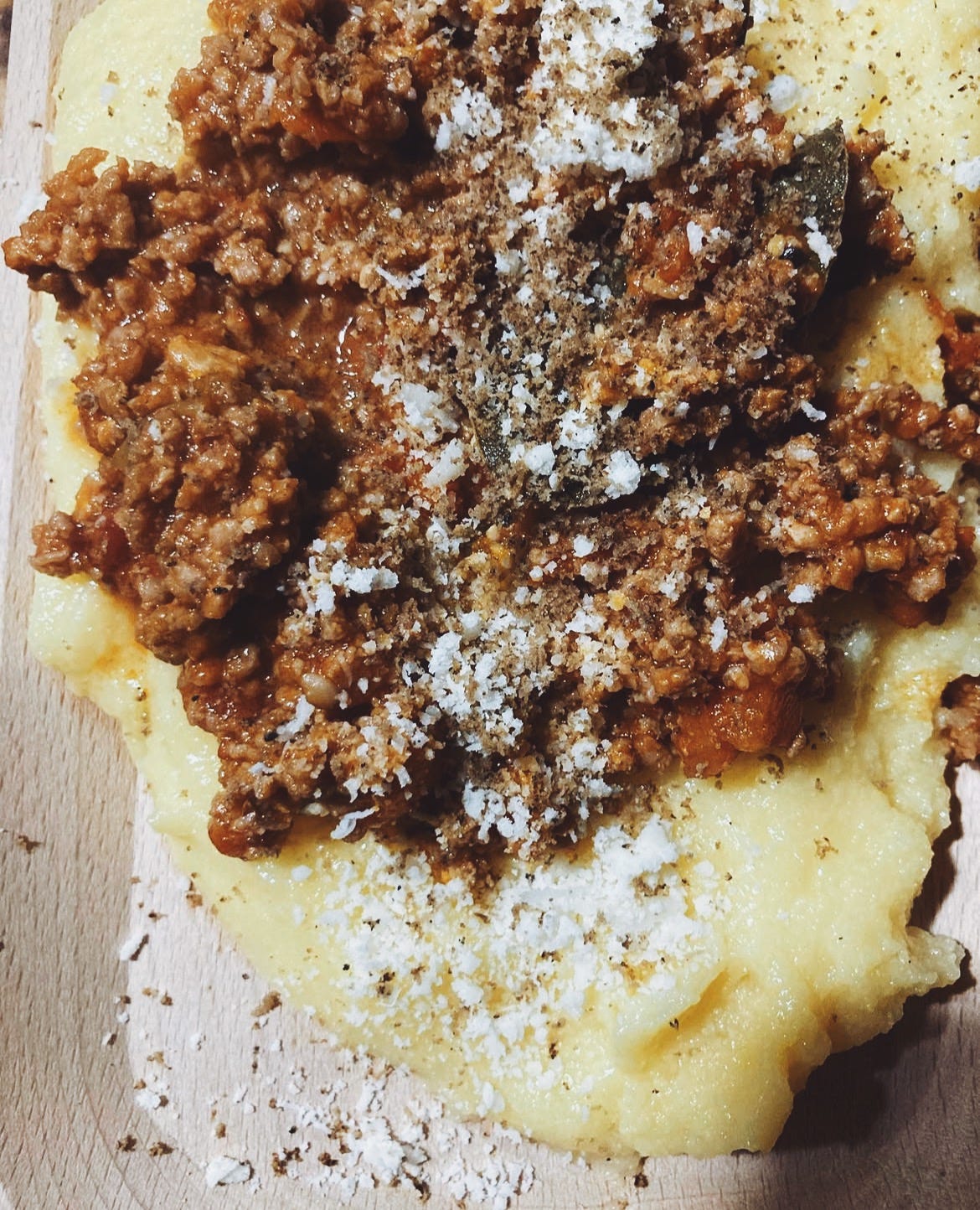
Failing to acknowledge things does not mean that they cease to exist, and I cannot truly pay tribute to Irish and regional Italian food culture without including meat and fish. As someone who is passionate about the preservation and communication of our said food history, heritage and traditions in order to keep them alive and moving forward, I strongly feel that if we completely erase animals from our diets, then we erase these culinary traditions and therefore, we erase ourselves.
This is, of course, an extremely controversial topic, especially in the face of climate change, with strong arguments on either side of the fence. I have reviewed many important studies and books, and for all of the reasons, we know that industrial farming must disappear. Sure, in a utopian world, we might shift down and evolve to an exclusively plant-based society and diet, but I do believe that our future is in the past and that these things are never black and white, so I plan to explore these ideas and topics with producers moving forward.
I think eating small amounts of meat and fish is key to supporting sustainable and sovereign food systems, as well as traditional and culturally appropriate diets suitable to our unique body types. I have lectured to American students attending courses at Sacred Heart University in Dingle to discuss aspects of our local traditional diet - the seaweed, oily fish, fresh eggs, lamb, raw and fermented dairy, wild foods to include fruit, seasonal vegetables and lifestyle that had our ancestors of extreme intelligence living well into their 90s.
‘We are maintaining a tradition that goes back for generations and ensuring that it's not lost. It fosters a sense of community, and the very activity maintains the connection…’
‘The meat has a saltiness that the French call pré-salé, says Kennedy. The Atlantic Ocean storms and waves sprinkle saltiness on the grass; it's like a marinade for the grass and when the lambs eat the grass and the herbs, it's as if they are marinated from inside. As the lambs age, the meat develops a strong wild taste - right now it is bang on, a deep burgundy colour and lovely marbled fat that melts into the meat, rather than the lardy fat that you sometimes get with lowland sheep.’ - Salted by the ocean, Irish Independent
When I contacted one of our local regenerative farmers for some lamb this past Christmas, I didn’t get there fast enough. It was gone, and so were the eggs. Then I contacted another regenerative farmer who had also sold out and he suggested that I contact another who was selling boxes of organic veal as he wasn’t making money on organic chickens (strange enough).
And this is just it. When I spend my money locally, I am supporting my neighbours. I am supporting farmers, fisherman and their families who are going against the grain in the face of government regulations and greenwashing to reintroduce the systems that support the wellness of the local community, landscape and its biodiversity applying local indigenous knowledge and language that has been passed through generations. Ask them about their trials and tribulations around growing local organic vegetables in the face of cheap imports and climate change and they will tell you.
When I buy lamb on the Dingle Peninsula or when I open the door of our local butcher on the Rieti plain who will tell me with an enthusiastic smile exactly how to cook everything I purchase according to our traditions here in Sabina, I am supporting our local heroes. I am supporting a slow, traditional way of life and all of the cultural heritage that is woven through it. I am supporting local passion and innovation that pays tribute to the past.
And I’m good with that.
While most would refer to this recipe as ragù, Maria Giuseppina Truini Palomba calls it ‘sugo di agnello’ in her book La cucina sabina which features often unmeasured recipes that she would have gathered orally from the women in the kitchens of Sabina throughout the second half of the 20th century.
The recipe featured here is my personal interpretation. As mentioned above, we enjoy this lamb ragù during the holidays or as part of the odd Sunday lunch during months of winter and spring. My family, goes absolutely crazy for it, and this includes my 11 year old who apparently ‘doesn’t eat meat’.
Lamb ragù is being slowly simmered on the stovetops of Sabina as we speak. Its deep and inviting noble colour will wrap around fettuccine, tagliatelle, tagliolini, or mezzi rigatoni. It will be used as a filling for crespelle (delicate savoury crêpes) and lasagne, laced with an indulgent béchamel.
I also use lamb ragù to accompany bright yellow plates of polenta and as a pimped up base for a nontraditional shepherd’s pie. Any of these choices are best finished off with the snowiest grating of aged pecorino. If it’s within your possibility, I highly suggest that you try to source the best local organic lamb that you can find. This is a recipe that is sure to please a crowd.
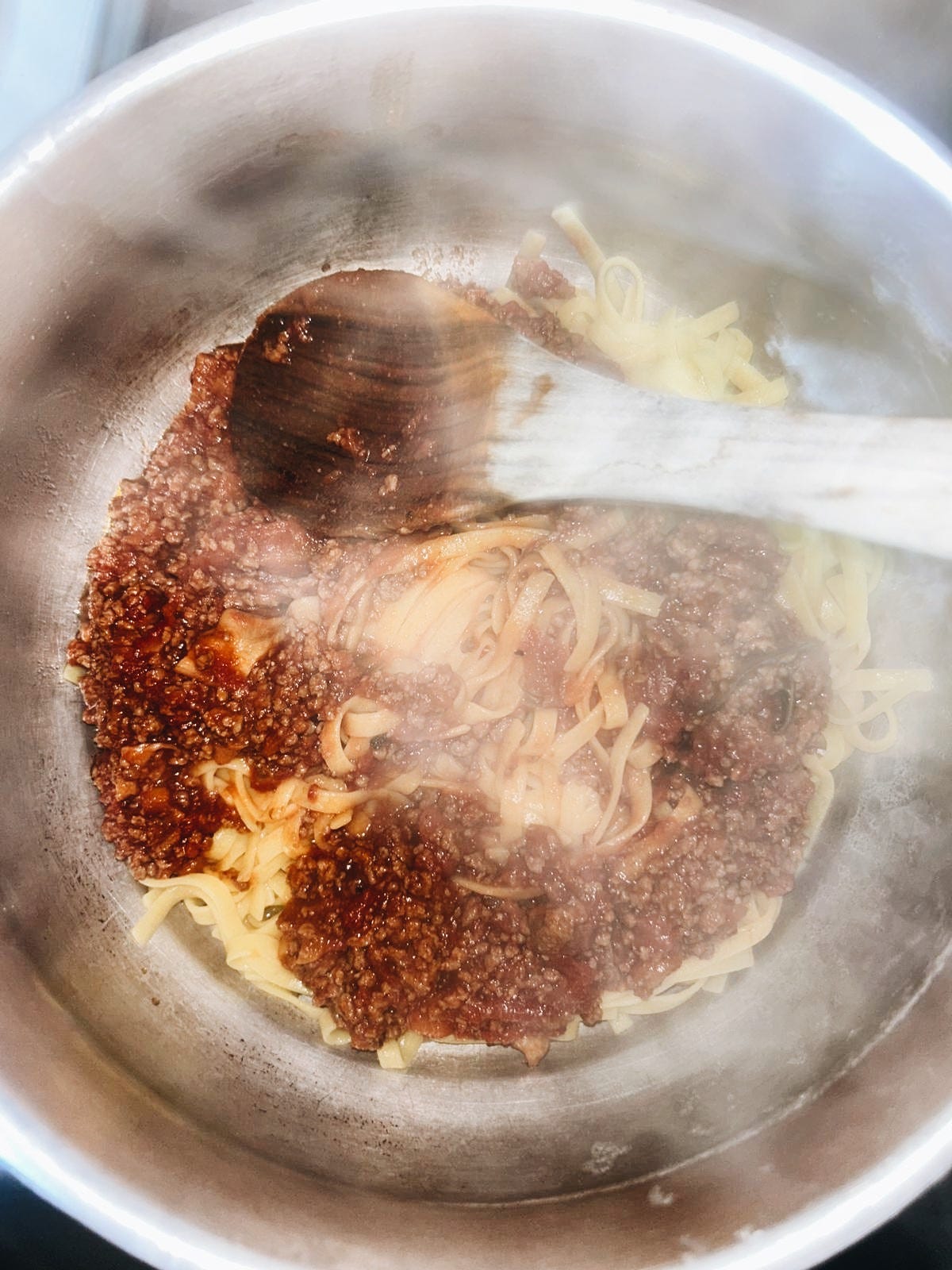
Lamb Ragù
Sugo di agnello
GF + LF
Serves 6-8
Ingredients:
500g minced or diced lamb
1 medium carrot
1 medium onion
1 medium stalk of celery + a small handful leaves
1 small dried chili (peperoncino)
700g of quality plum tomatoes
A ladle or two of vegetable or beef stock
1 large bay leaf
A good splash of white wine
Extra virgin olive oil
Sea salt + freshly ground black pepper
Optional: Sprigs of rosemary and/or sage. 1-2 cloves of garlic.
Method:
Take the meat out of the refrigerator to reach room temperature.
Finely chop the vegetables and herbs together to create a battuto.
Thinly coat the bottom of a medium/large wide and heavy bottomed pot with olive oil. Warm over low heat and crumble in the dried chili.
Add the battuto and the bay leaf and lightly season. Gently cook the vegetables until they are clear and golden.
Turn the meat up to medium and add meat stirring to brown. Lightly season.
Add a generous splash wine and then the stock and the tomatoes crushing with the back of a wooden spoon. Gently simmer half covered for at least 2.5 hours. Add a bit of stock to loosen if necessary and check the seasoning again before serving or proceeding with your recipes.
Notes:
This recipe makes enough for a standard 33cm x 23cm baking dish of lasagne and crespelle, and depending on how heavy-handed you are with the meat, you might even have enough left over to freeze for future cravings.
Lamb ragù is best complimented by freshly grated aged pecorino and/or Parmigiano Reggiano.
Have some black truffle to hand? Grate some into your ragù at the last minute to bring it to the next level.





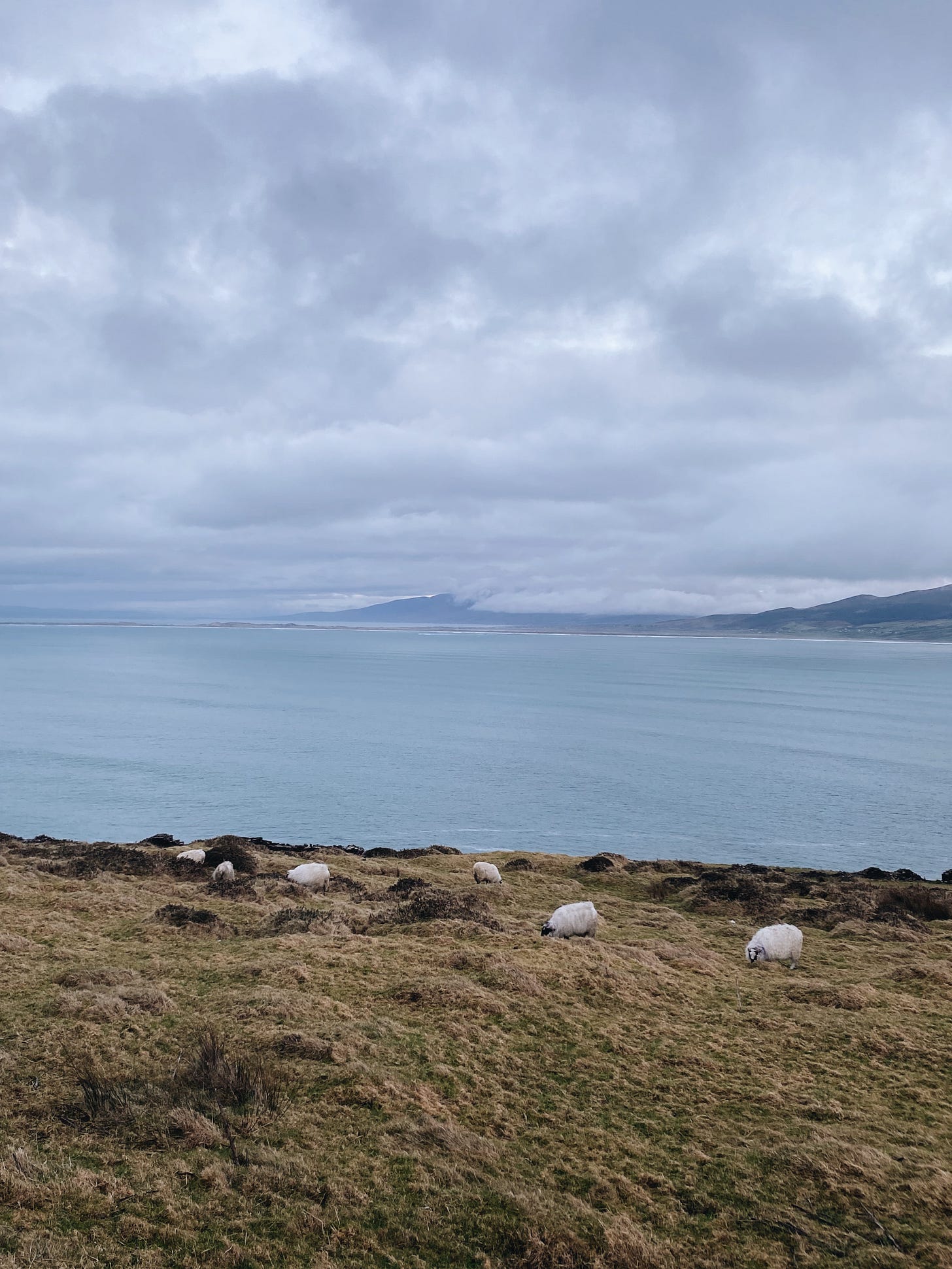
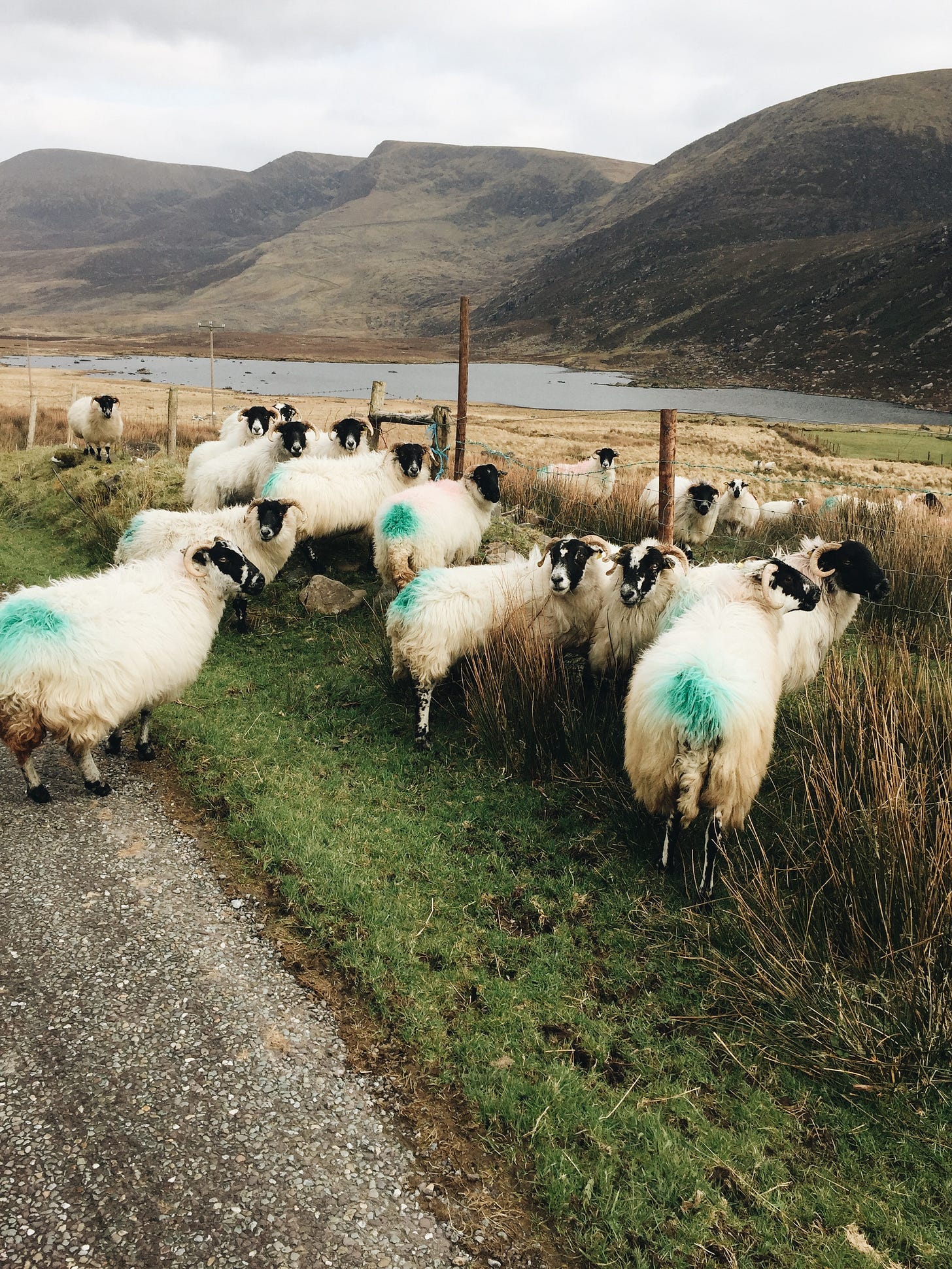
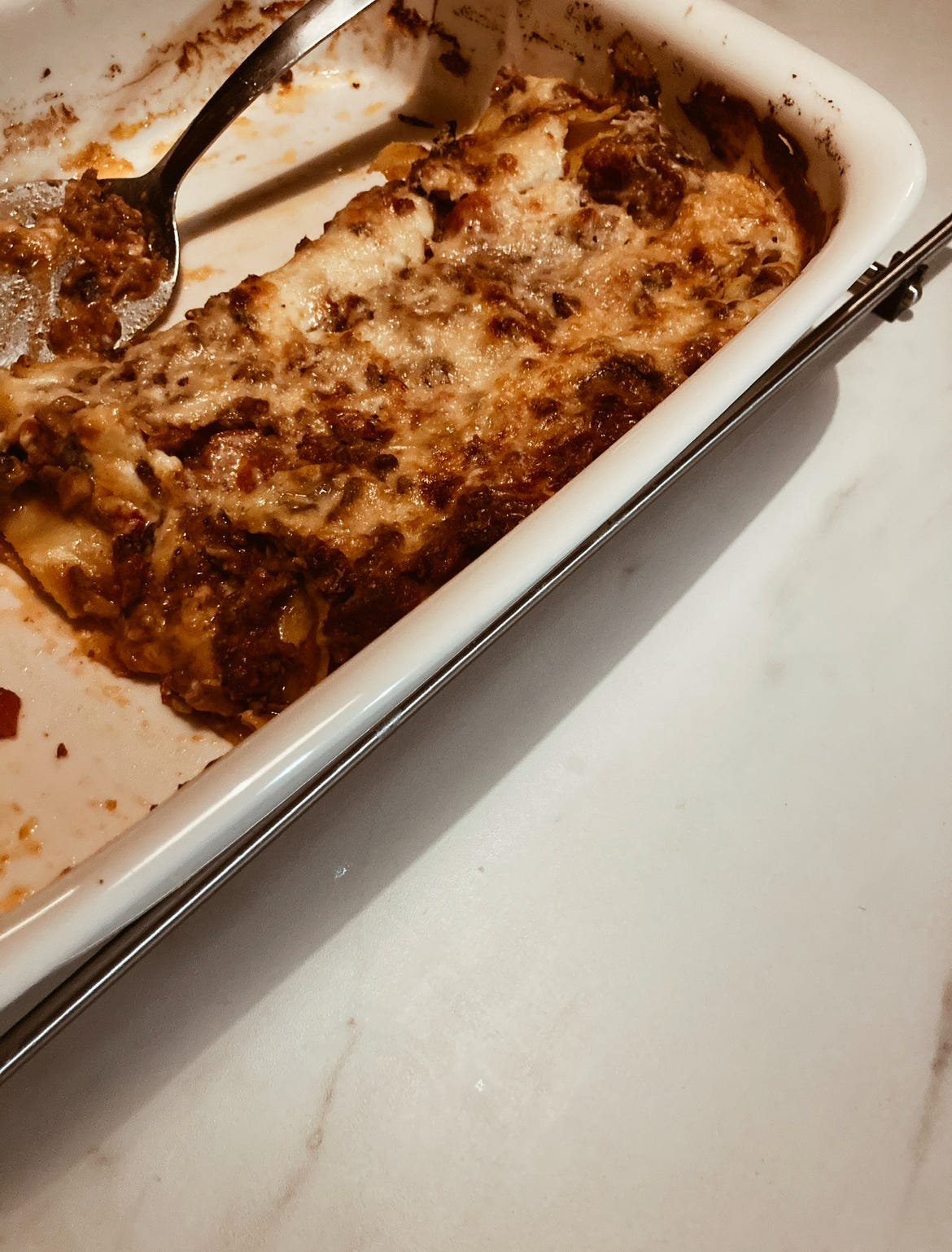


I love Italian lamb (an important diet staple in Abruzzo, as you know) so I can only imagine how good the lamb from the Dingle Peninsula must be. I don't think I ate lamb on my only visit to Ireland many years ago when I was in college. Hoping to get back one day soon.